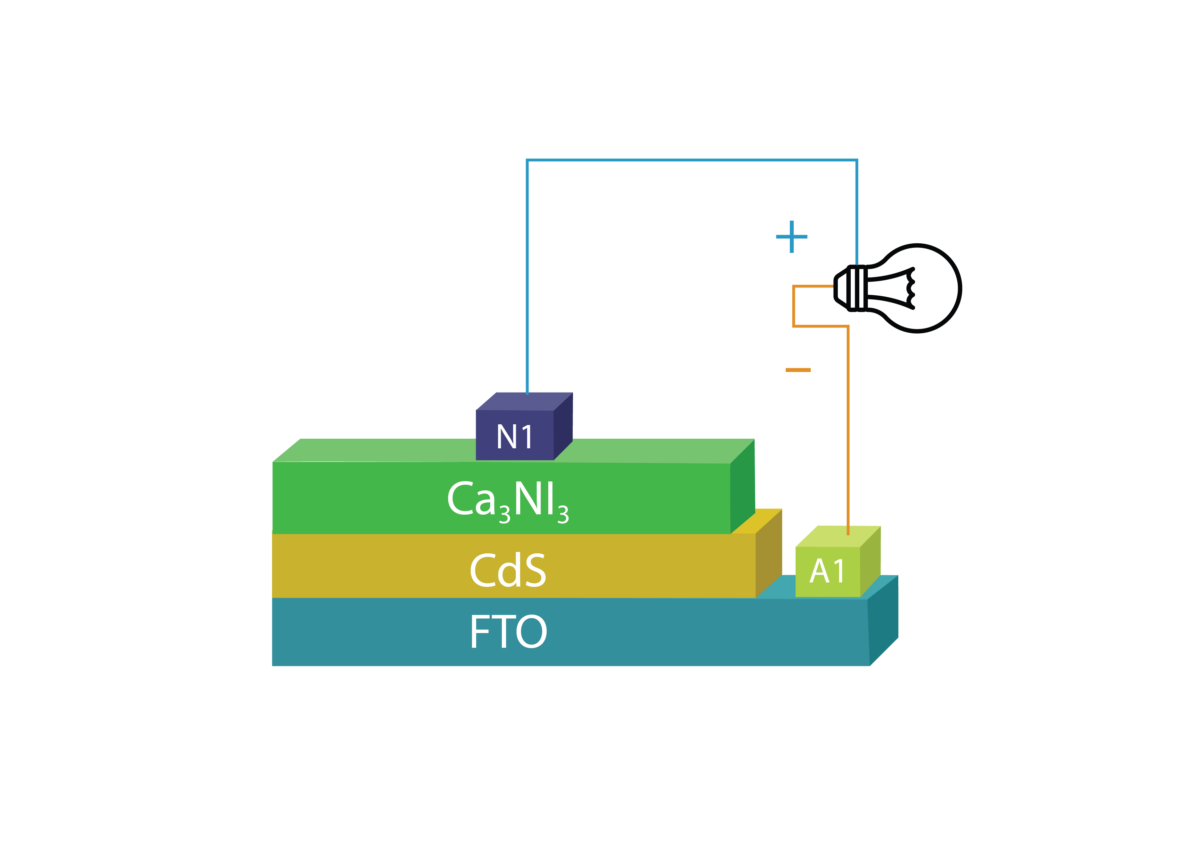A team of scientists led by the Begum Rokeya University in Bangladesh designed a solar cell with an absorber based on inorganic calcium nitrogen iodide (Ca3NI3) perovskite.
The research group explained that this perovskite material has an energy bandgap of 1.31 eV and features “remarkable” compositional stability and resistance to heat.
“The technique of doping with host lattices is commonly employed to modify the perovskite lattice structure and enhance the performance of PV systems, often involving the incorporation of materials like Ca3NI3,” it said, referring to previous research conducted on this material for PV applications. “Ca3NI3 perovskite material is preferred for solar cells because of its possible stability, variable bandgap, and effective light absorption.”
For the cell simulation, the academics used the SCAPS-1D solar cell capacitance software, developed by the University of Ghent, to simulate the novel cell configuration. The new cell was designed to have a substrate made of fluorine-doped tin oxide (FTO), an electron transport layer (ETL) based on cadmium sulfide (CdS), the Ca3NI3 absorber, and aluminum (Al) and nickel (Ni) metal contacts.
The scientists explained that the efficiency of the cell increases by enhancing the absorber thickness, without any negative effect on the device's fill factor. They also warned, however, that increasing the thickness of the absorber may lead to higher production costs.
“For this reason, in the current study, we have set the layer width to an enhanced value of 1 μm,” they specified. “When the absorption layer's doping level approaches 1017 cm−3, the perovskite layer's intrinsic electric field stops being boosted, the carriers separate more slowly, and the carrier rate of recombination significantly rises.”
Popular content
Simulated under standard illumination conditions, the proposed cell configuration achieved a power conversion efficiency of 31.31%, an open-circuit voltage of 0.8793 V, a short-circuit density of 43.590813 mA cm2, and a fill factor of 81.68%.
The team claims these values are the result of the optimized design of the cell, which reportedly led to a reduction in the level of defects in the absorber layer. “The results of this investigation enhance our comprehension of the robust potential of Ca3NI3 perovskites when combined with CdS-ETL for the purpose of designing more experimentally high-efficiency, stable, and environmentally friendly perovskite solar cell heterostructures,” they stated.
The new cell concept was presented in the study “New highly efficient perovskite solar cell with power conversion efficiency of 31% based on Ca3NI3 and an effective charge transport layer,” published in Optics Communications.
The research team was also formed by scientists from Bangladesh's Technical Teachers Training College, the King Saud University in Saudi Arabia, the Shenzhen University in China, and the Kathmandu University in Nepal.
This content is protected by copyright and may not be reused. If you want to cooperate with us and would like to reuse some of our content, please contact: editors@pv-magazine.com.



By submitting this form you agree to pv magazine using your data for the purposes of publishing your comment.
Your personal data will only be disclosed or otherwise transmitted to third parties for the purposes of spam filtering or if this is necessary for technical maintenance of the website. Any other transfer to third parties will not take place unless this is justified on the basis of applicable data protection regulations or if pv magazine is legally obliged to do so.
You may revoke this consent at any time with effect for the future, in which case your personal data will be deleted immediately. Otherwise, your data will be deleted if pv magazine has processed your request or the purpose of data storage is fulfilled.
Further information on data privacy can be found in our Data Protection Policy.